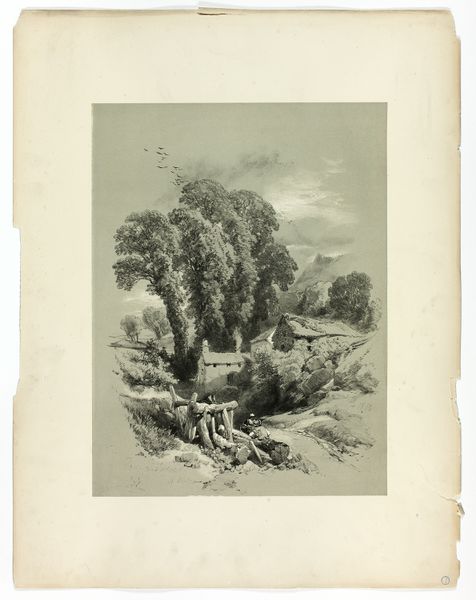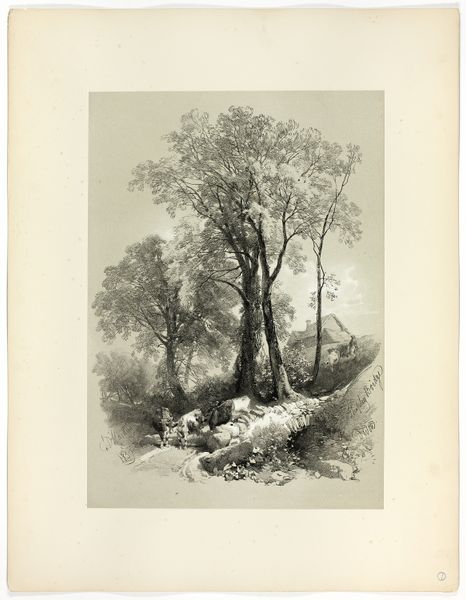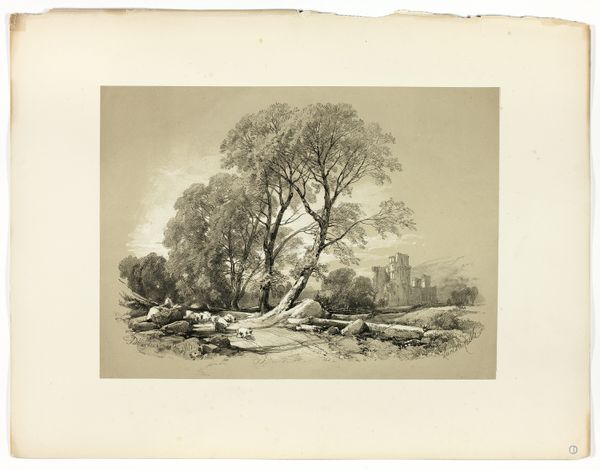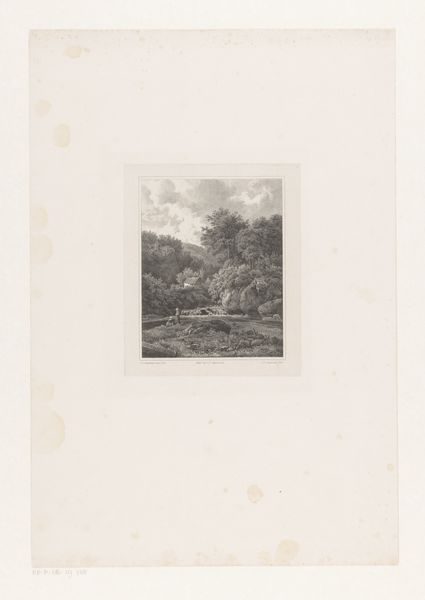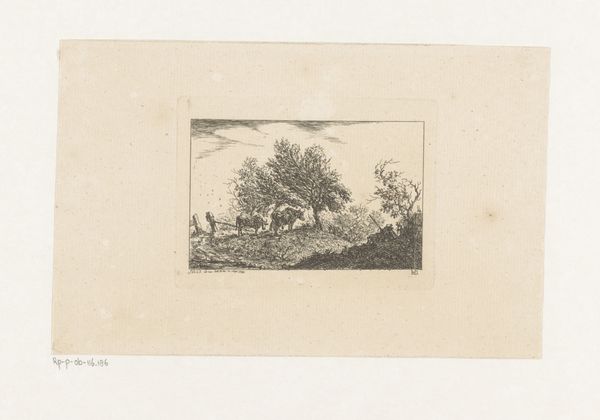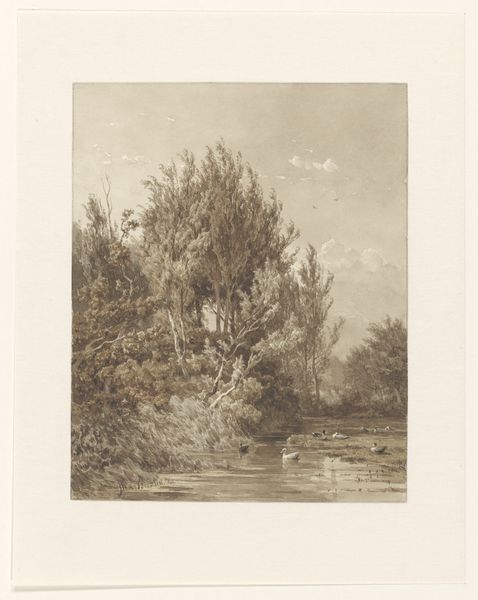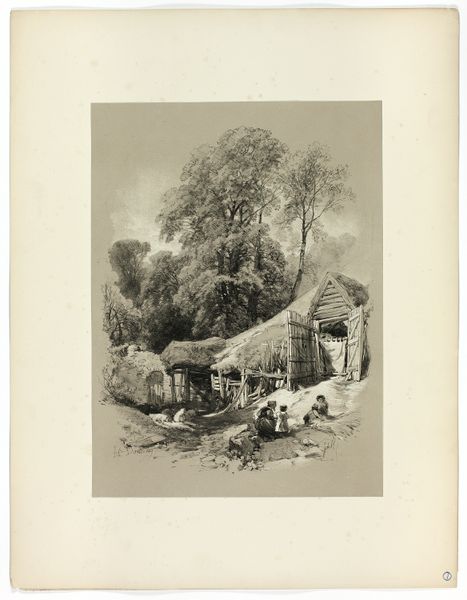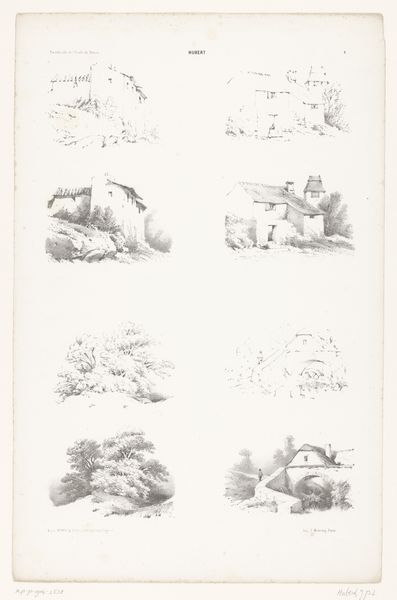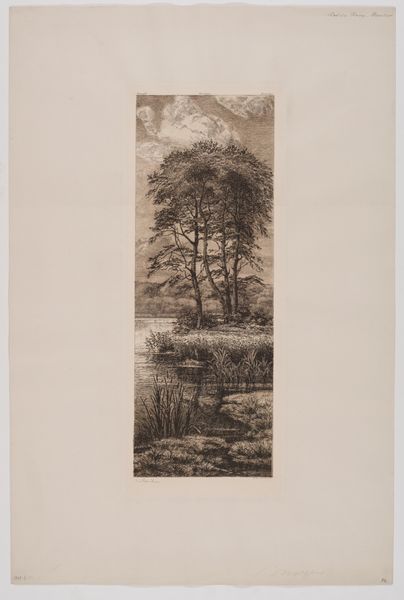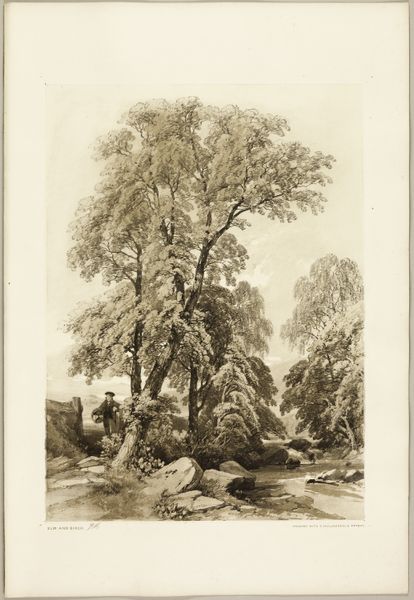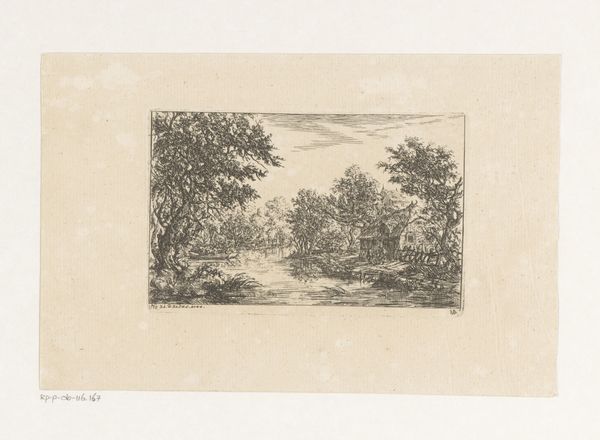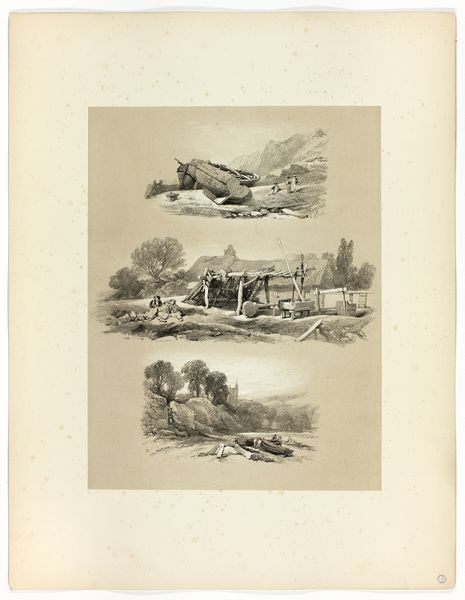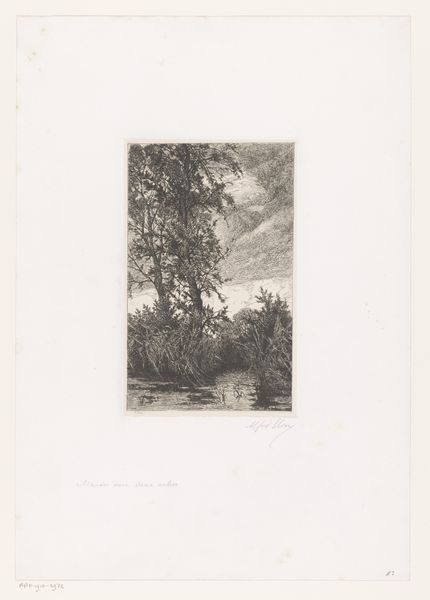
Pandy Mill, Church Pool, and one other subject, from Picturesque Selections c. 1860
0:00
0:00
Dimensions: 390 × 271 mm (primary support); 560 × 430 mm (secondary support)
Copyright: Public Domain
James Duffield Harding created this lithograph, Pandy Mill, Church Pool, and one other subject, from Picturesque Selections, sometime in the first half of the 19th century. Its appeal lies in an aesthetic of picturesque decay, a fascination for ruined buildings in verdant landscapes. Made in Britain, this aesthetic was a product of the industrial revolution and the move of population into cities, creating a romanticised view of the countryside as a space of pure beauty but also decline. The fashion for the picturesque was driven by institutions, with a market emerging for artists’ manuals that taught amateurs how to sketch scenes just like this. It encouraged a conservative view of society in which the old ways were seen as superior. Understanding its popularity requires research into art criticism and the publishing industry of the time. The meaning of art is never fixed; it changes according to its social context.
Comments
No comments
Be the first to comment and join the conversation on the ultimate creative platform.
